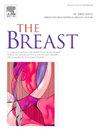Tumor site, stage, and receptor-specific efficacy of radiation therapy in Asian breast cancer patients aged 60 years and older: A SEER database survival analysis incorporating clinicopathological features and nomograms
IF 7.9
2区 医学
Q1 OBSTETRICS & GYNECOLOGY
引用次数: 0
Abstract
Purpose
This study evaluates the survival benefits of radiation therapy (RT) in elderly (≥60 years) Asian breast cancer patients focusing on tumor site, stage, and receptor status using SEER data. And aims to provide a nuanced understanding of how RT impacts survival outcomes in this demographic, particularly across varying tumor stages and receptor statuses.
Methods
We analyzed 47,868 elderly (≥60 years) Asian patients from the SEER database (2000–2021). Survival outcomes were assessed using Kaplan-Meier analysis, Cox regression models, and nomograms. Multivariate analyses quantified RT efficacy across tumor sites (central, axillary tail), hormone receptor status (ER/PR, HER2), and stages (I–IV).
Results
RT improved median overall survival (OS) (17.5 vs. 13.4 years; hazard ratio [HR] = 0.54, p < 0.001), with consistent benefits across delivery methods. Axillary tail tumors showed the greatest survival gain (64.2 % OS improvement, HR = 0.36). ER/PR-positive patients derived significant benefit (HR = 0.48), unlike HER2-positive cases (p = 0.12). Stage III patients experienced maximal survival improvement (HR = 0.41), while stage IV showed marginal benefits (HR = 0.89). Age-stratified analyses confirmed benefits across all groups (60–69, 70–79, ≥80 years).
Conclusion
RT confers significant survival benefits in elderly (≥60 years) Asian breast cancer patients, with pronounced efficacy observed in axillary tail tumors and stage III disease. ER/PR-positive tumors exhibit enhanced treatment responsiveness, while HER2 status remains non-predictive of therapeutic outcomes. However, limited efficacy in stage IV disease underscores the necessity for alternative management strategies in advanced-stage settings. These findings emphasized personalizing RT guided by tumor biology and staging, while carefully considering comorbidities and treatment-related toxicities in geriatric oncology populations.
60岁及以上亚洲乳腺癌患者放疗的肿瘤部位、分期和受体特异性疗效:一项包含临床病理特征和nomogram的SEER数据库生存分析
目的:本研究利用SEER数据评估老年(≥60岁)亚洲乳腺癌患者放射治疗(RT)的生存获益,重点关注肿瘤部位、分期和受体状态。目的是提供一个细致入微的理解RT如何影响这一人群的生存结果,特别是在不同的肿瘤分期和受体状态下。方法:我们分析了来自SEER数据库(2000-2021)的47,868例老年(≥60岁)亚洲患者。生存结果采用Kaplan-Meier分析、Cox回归模型和norm图进行评估。多变量分析量化了肿瘤部位(中央、腋窝尾)、激素受体状态(ER/PR、HER2)和分期(I-IV)的RT疗效。结果:rt改善了中位总生存期(OS) (17.5 vs 13.4年;风险比[HR] = 0.54, p <;0.001),在不同的交付方法中都有一致的益处。腋窝尾部肿瘤的生存率最高(生存率提高64.2%,HR = 0.36)。ER/ pr阳性患者获益显著(HR = 0.48),与her2阳性患者不同(p = 0.12)。III期患者生存改善最大(HR = 0.41),而IV期患者生存改善边际(HR = 0.89)。年龄分层分析证实所有组(60-69岁、70-79岁、≥80岁)均有获益。结论放疗在老年(≥60岁)亚洲乳腺癌患者中具有显著的生存优势,在腋窝尾肿瘤和III期疾病中观察到显著的疗效。ER/ pr阳性肿瘤表现出增强的治疗反应性,而HER2状态仍然不能预测治疗结果。然而,在IV期疾病中有限的疗效强调了在晚期环境中采用替代管理策略的必要性。这些发现强调了在肿瘤生物学和分期指导下的个体化放疗,同时仔细考虑老年肿瘤人群的合并症和治疗相关的毒性。
本文章由计算机程序翻译,如有差异,请以英文原文为准。
求助全文
约1分钟内获得全文
求助全文
来源期刊

Breast
医学-妇产科学
CiteScore
8.70
自引率
2.60%
发文量
165
审稿时长
59 days
期刊介绍:
The Breast is an international, multidisciplinary journal for researchers and clinicians, which focuses on translational and clinical research for the advancement of breast cancer prevention, diagnosis and treatment of all stages.
 求助内容:
求助内容: 应助结果提醒方式:
应助结果提醒方式:


